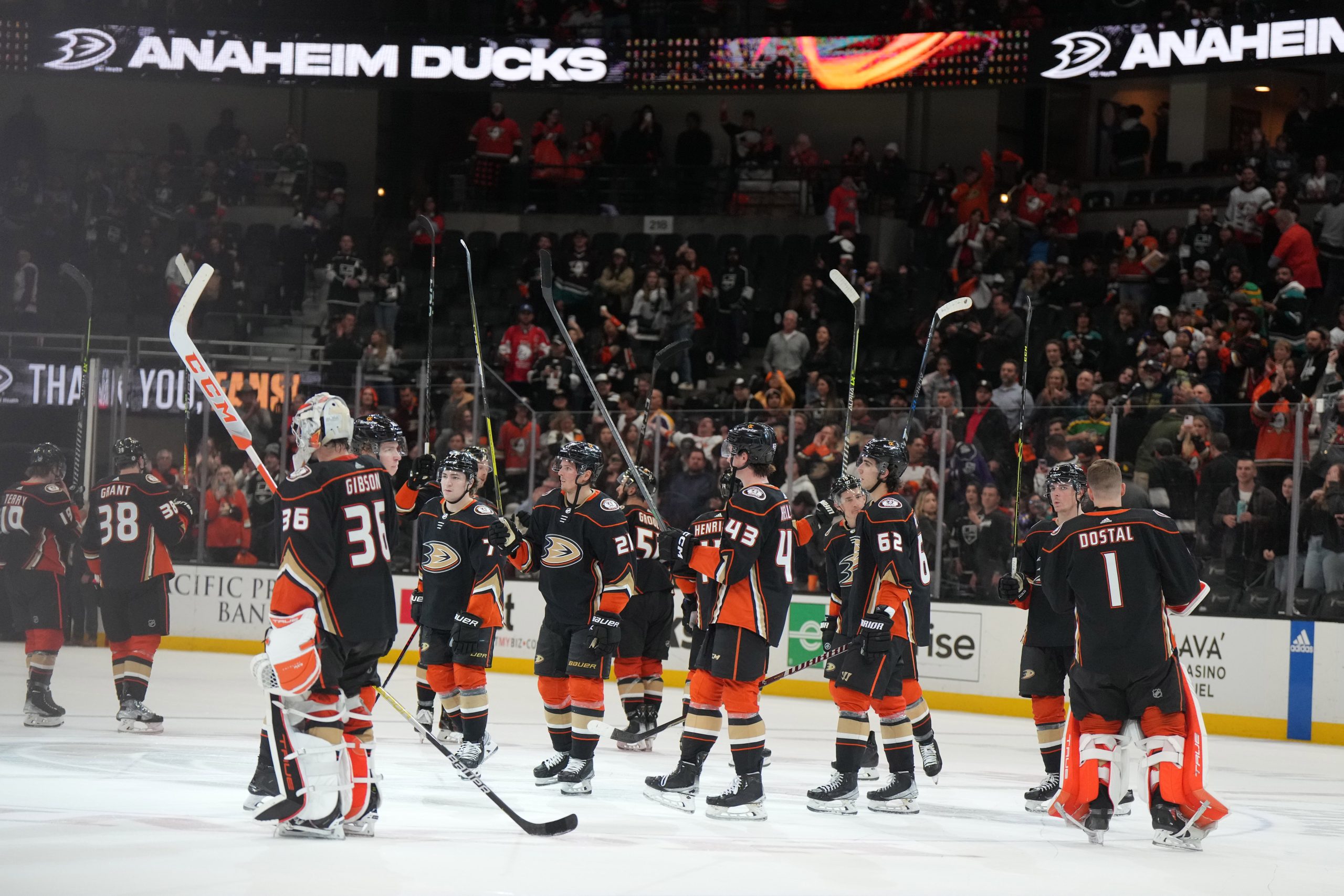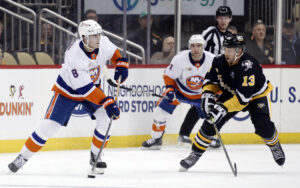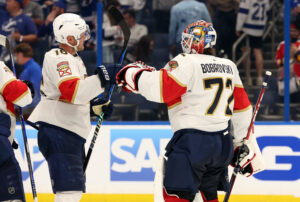The Anaheim Ducks have experienced their share of scoring woes in recent seasons. Poor lineup utilization and a glaring lack of depth up front have largely contributed to the club’s lackluster offence. However, there’s optimism that this year’s forward corps for Anaheim can quell its offensive troubles of previous years. Expected progression from key players, a notable free agent signing and a new voice in head coach Greg Cronin represent reasons to be hopeful. But all this speculation begs the question: What will the forward lines look like this year for the Ducks?
Potential Forward lines
With the offseason still in full swing, potential Ducks forward lines could be as follows:
Alex Killorn – Trevor Zegras – Troy Terry
Adam Henrique – Mason McTavish – Ryan Strome
Frank Vatrano – Isac Lundestrom – Nikita Nesterenko
Brock McGinn – Sam Carrick – Max Jones
First Line
Recent signee Alex Killorn would fit like a glove on a line with Trevor Zegras and Troy Terry. His game perfectly complements their style of play and would allow them freedom to operate all over the ice. The former Tampa Bay Lightning veteran does well to retrieve pucks from the defensive zone. Killorn’s involvement in getting pucks back would not only take pressure off his defensemen, but it’d give Zegras and Terry, two excellent transitional players, ample time and space to exit the zone with possession.
ALEX KILLORN, EVERYONE pic.twitter.com/Dt0Gs6u1Wc
— Tampa Bay Lightning (@TBLightning) April 25, 2023
Similarly, Killorn’s fantastic work on the forecheck would enable the open-ice wizardry of Zegras and Terry to materialize in the offensive zone. This trio would also thrive together because of Killorn’s plus-shot and overall excellent finishing ability. His off-puck instincts and nose for the net would make him the perfect third scoring option on a line featuring two deceptive, puck-dominant playmakers.
Second Line
As a rookie, Mason McTavish proved he could make those around him better. He saw time both at centre and wing and played up and down the lineup throughout the season. Playing with competent offensive players like Adam Henrique and Ryan Strome would only boost McTavish’s production, as he was forced to elevate less skilled linemates last year.
While McTavish’s powerful shot is well-documented, he developed great playmaking chops this past campaign. His ability to score and pass with absolute precision makes him a prime candidate to centre a line with a goal-scorer in Henrique and a pass-first player in Strome. With the stout defensive play of Henrique and McTavish, this line has the potential to be impactful in all three zones.
Third Line
The presumptive third line for Anaheim offers an interesting diversity of skillsets. Simply put, Frank Vatrano likes to shoot the puck. The winger beats goalies with his potent wrist shot from anywhere in the slot. Vatrano picks corners from distance but also finds soft spots on the ice to receive one-timers and put home rebounds.
Conversely, Isac Lundestrom represents a distinctly different type of player. The Swedish centre’s smooth skating makes him an effective puck carrier from his own end of the ice through the neutral zone. This past season, Lundestrom noticeably improved his decision making with the puck when attacking the offensive third of the ice. He drove the middle lane with conviction and looked to find teammates in scoring areas. Lundestrom’s poise with possession was evident as well, as he incorporated delays and cutbacks to find the trailing option. The continued refinement of Lundestrom’s playmaking game will bode well playing with a volume shooter like Vatrano.
Nikita Nesterenko, acquired by the Ducks in last year’s John Klingberg trade, is an interesting case study. The Brooklyn native played in nine games for Anaheim last year, showcasing good puck skills and forechecking abilities. While his sample size in the NHL thus far is limited, Nesterenko didn’t look out of place during his short stint and could evolve into a skilled energy winger.
Fourth Line
A line consisting of Brock McGinn, Sam Carrick and Max Jones won’t generate or produce much offence. However, these players each possess valuable elements in their game. McGinn is a low event player. He doesn’t push the pace offensively, but he’s adept at suppressing the opposition’s quality and quantity of chances. He uses his body to kill plays along the wall and his stick positioning to break them up in open ice.
Like McGinn, Sam Carrick is solely a defensive presence. The veteran has effectively limited shot opportunities at even strength during his tenure with the Ducks.
Max Jones has the most skill of these three players. Jones isn’t a play driver or threat to create off the rush, but he’s at his best offensively when working cycles down low and using his speed to hound pucks below the goal line. He protects the puck well with his big frame and has underrated small-area skill. Jones showed some offensive promise down the stretch last year, and it would be a welcome sight if he could parlay that late-season success into this coming year.
Better Days Ahead
While this forward group remains flawed overall, it stands to reason that goals will be easier to come by for the Ducks this upcoming season. For one, the signing of Alex Killorn addresses the need for finishing talent and depth at the wing position. Organizational pillars like Trevor Zegras and Mason McTavish will likely take another step in their development. There’s also intrigue surrounding Leo Carlsson, Anaheim’s second overall pick who recently signed his entry-level contract. Could he impress out of training camp and make the jump to the big club? That’s still to be determined. The hope remains, however, that this forward group will be primed and ready to take a collective step.
Main Photo Credit: Kirby Lee-USA TODAY Sports






